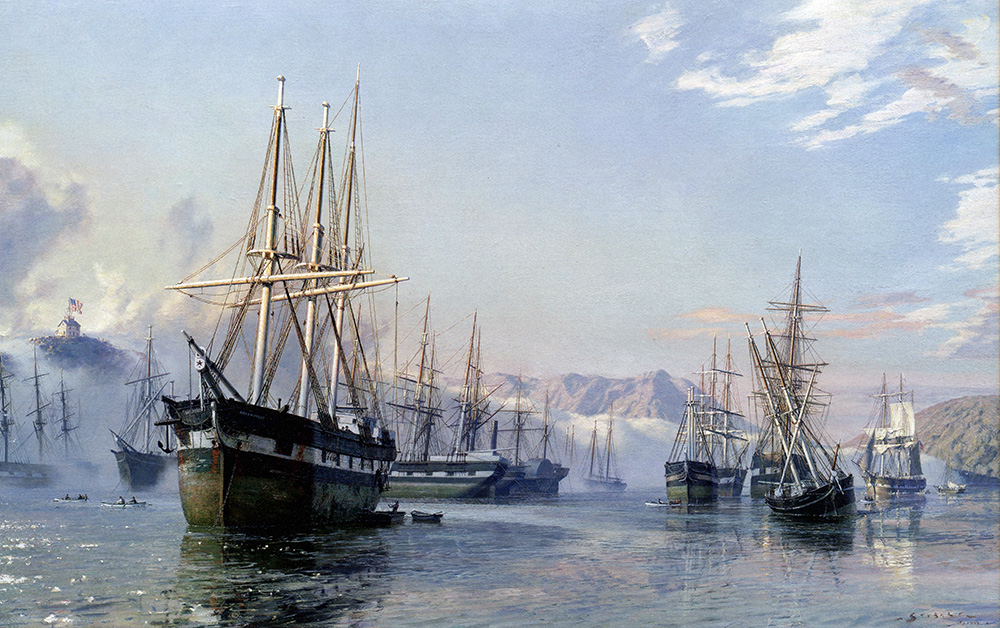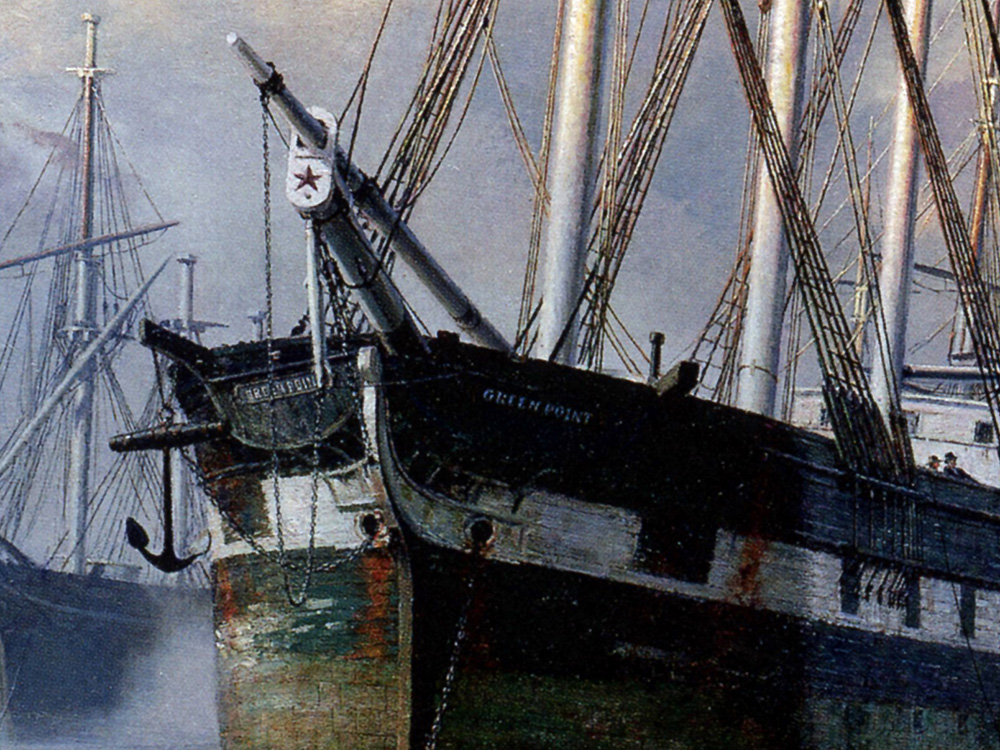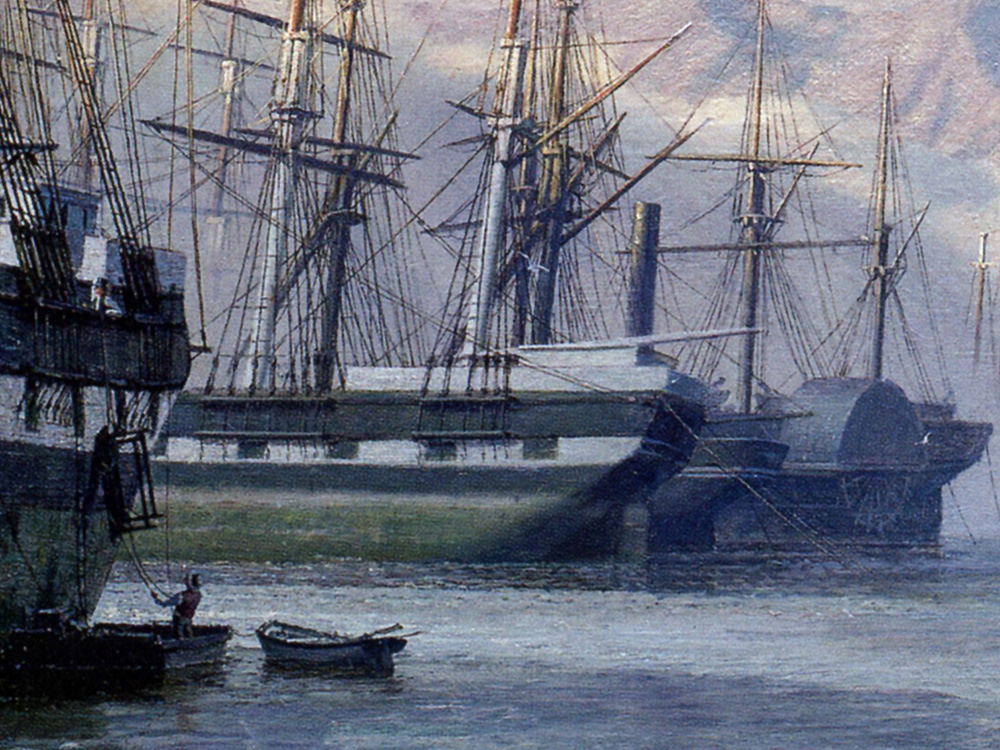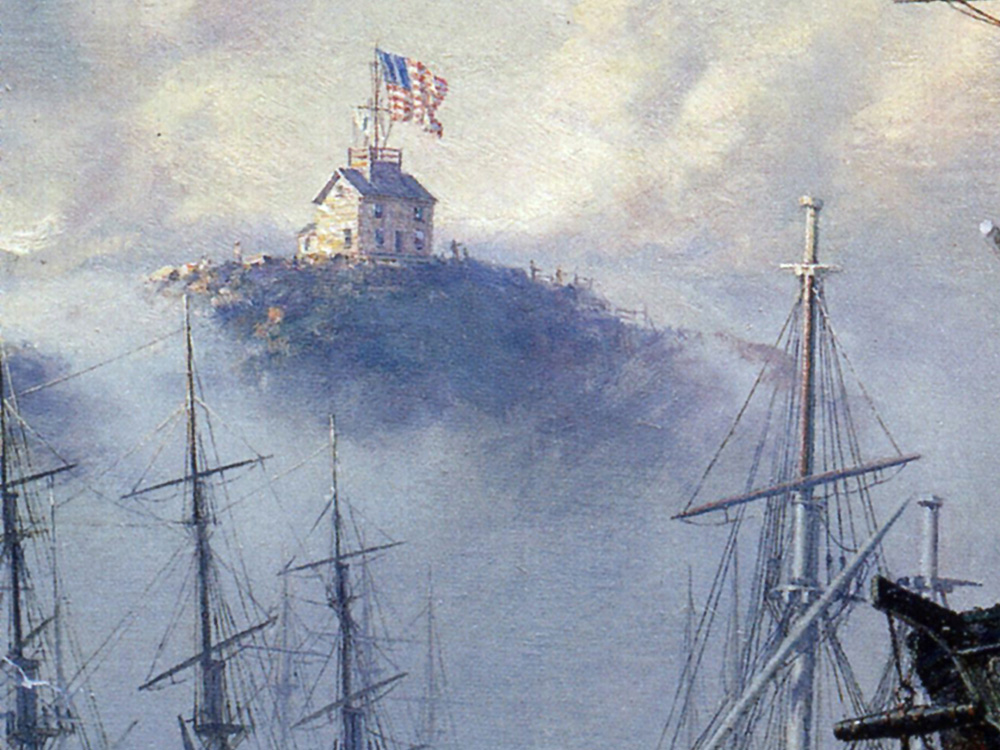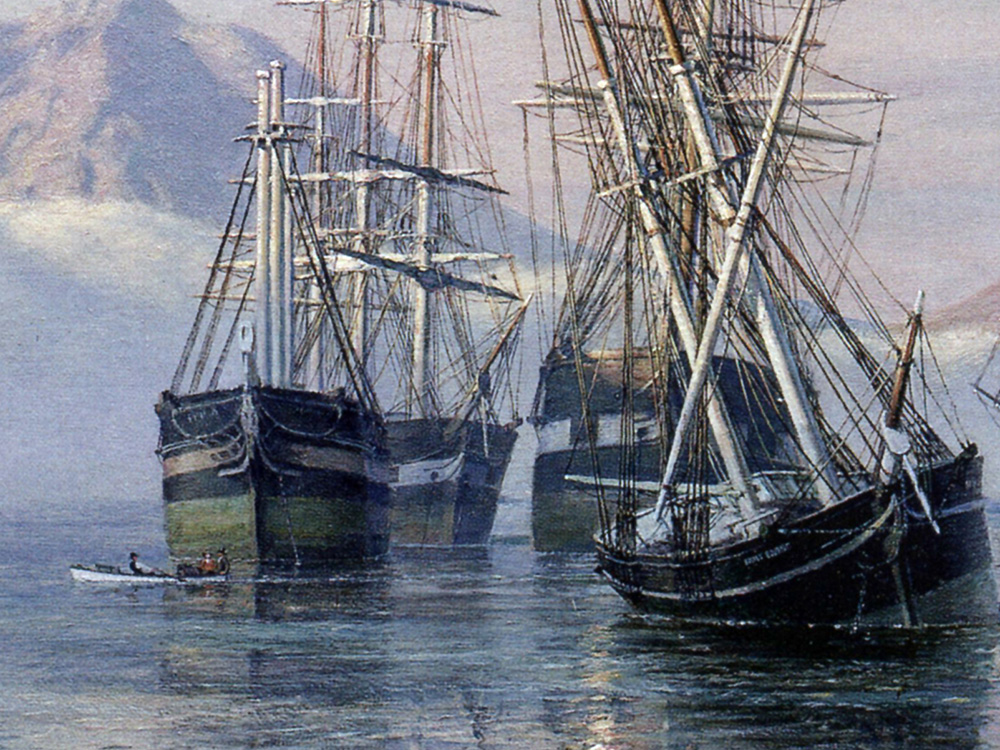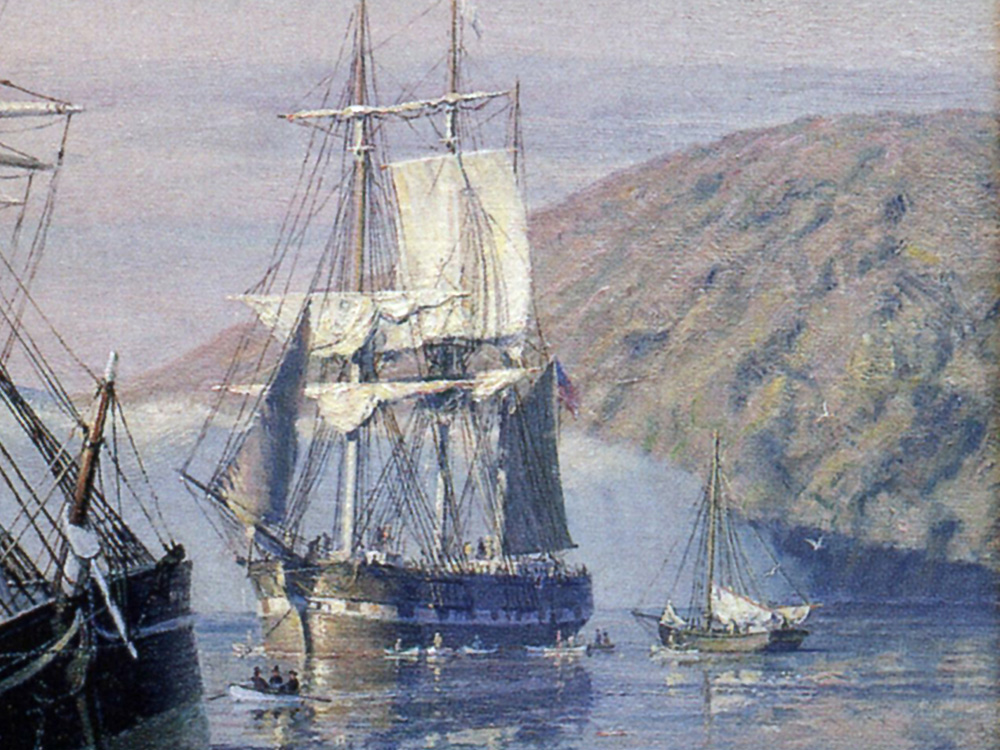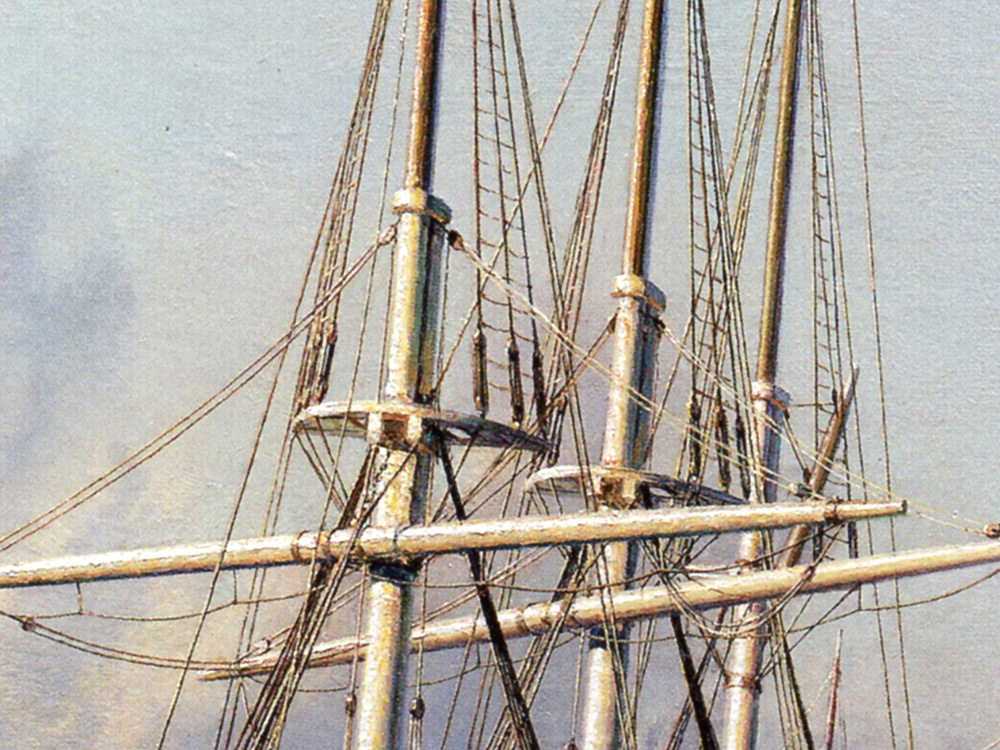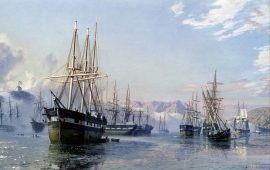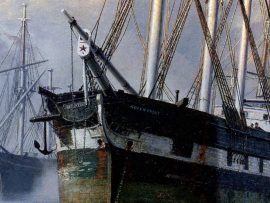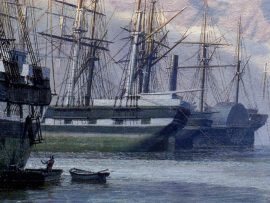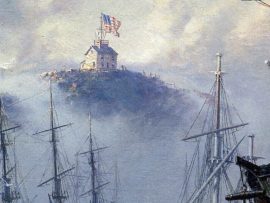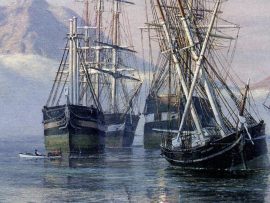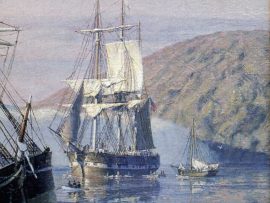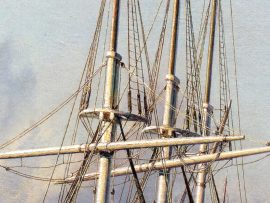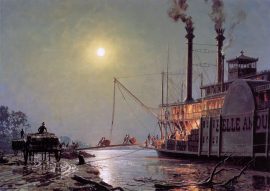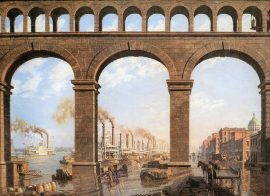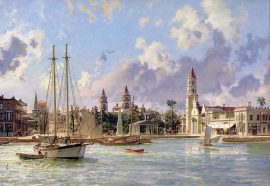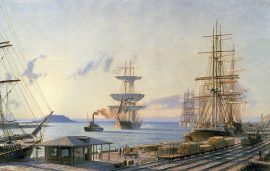San Francisco: The Gold Rush Harbor in 1849
$700.00 Original price was: $700.00.$630.00Current price is: $630.00.
Gold was initially discovered in California by James W Marshall, head of a trading post named Sutter’s Mill, where ideal conditions had been found for the operation of a sawmill on a tail-race off the American River. Marshall saw something glinting below the water as he carried out his daily inspection of the operation. The log book entry of the find was made on January 24th, 1848.
Communication being slow and cumbersome, it would take many months before the full impact of the discovery would reach the east coast, and it was not until President James K. Polk’s announcement on December 5th in his Annual Message to Congress that gold fever would suddenly explode. Said the President, “The accounts of the abundance of gold in that territory are of such an extraordinary character as would scarcely command belief were they not corroborated by authentic reports.” So began the phenomenal migration of fortune seekers to the diggings in the Sacramento Valley. The following day the Hartford Courier printed the following, “The California gold fever is approaching its crisis. We are told that the new region that has just become a part of our possessions, is El Dorado after all. – Thither is now setting a tide that will not cease its flow until either untold wealth is amassed or extended beggary is secured. By a sudden and accidental discovery, the ground is represented to be one vast gold mine. – Gold is picked up in pure lumps, twenty four carats fine. Soldiers are deserting their ranks, sailors their ships, and everybody their employment, to speed to the region of the gold mines…
The painting is a long contemplated commemoration of the extraordinary situation in San Francisco Bay where, in the ensuing months, over 800 abandoned vessels would clog the port in varying stages of disarray, their crews and many captains having fled to the diggings.
The view, looking north, shows the hodgepodge of early arrivals in their deserted state, high and dry on the mud flats off Yerba Buena Cove on a receding tide. Due to the rising heat of the desert to the east, the late afternoon fog is daily pulled like a wedge of cheese through the Golden Gate, eventually to engulf the fledgling city and all the ships. From this viewpoint, distant Mt. Tamalpais is flanked by Telegraph Hill to the left, and Angel Island, as the Maine-built bark “Henry Harbeck,” 198 days out from New York, has dropped her anchor in deep water and disembarks passengers into a shuttle of Whitehall boats, there being no steam launches available at that time. All the sixteen vessels in the painting are named. In the center, one of the earliest arrivals, the new mail steamship “California,” which had left New York prior to the President’s announcement and was unexpectedly mobbed when she called in at Panama by 700 prospectors demanding to be embarked, now lies stranded awaiting a supply of coal.
In the foreground some furniture items are recovered from the saloon of the bark “Green Point” to alleviate shortages of supplies in the city as the setting sun casts a shadow from the fog bank over the growing fleet of abandoned vessels.
| Weight | 6.00 lbs |
|---|---|
| Catalog: | Stobart-145 |
| Artist: | John Stobart |
| Dimensions: | 19 3/4" x 33" |
| Edition: | 600 |

